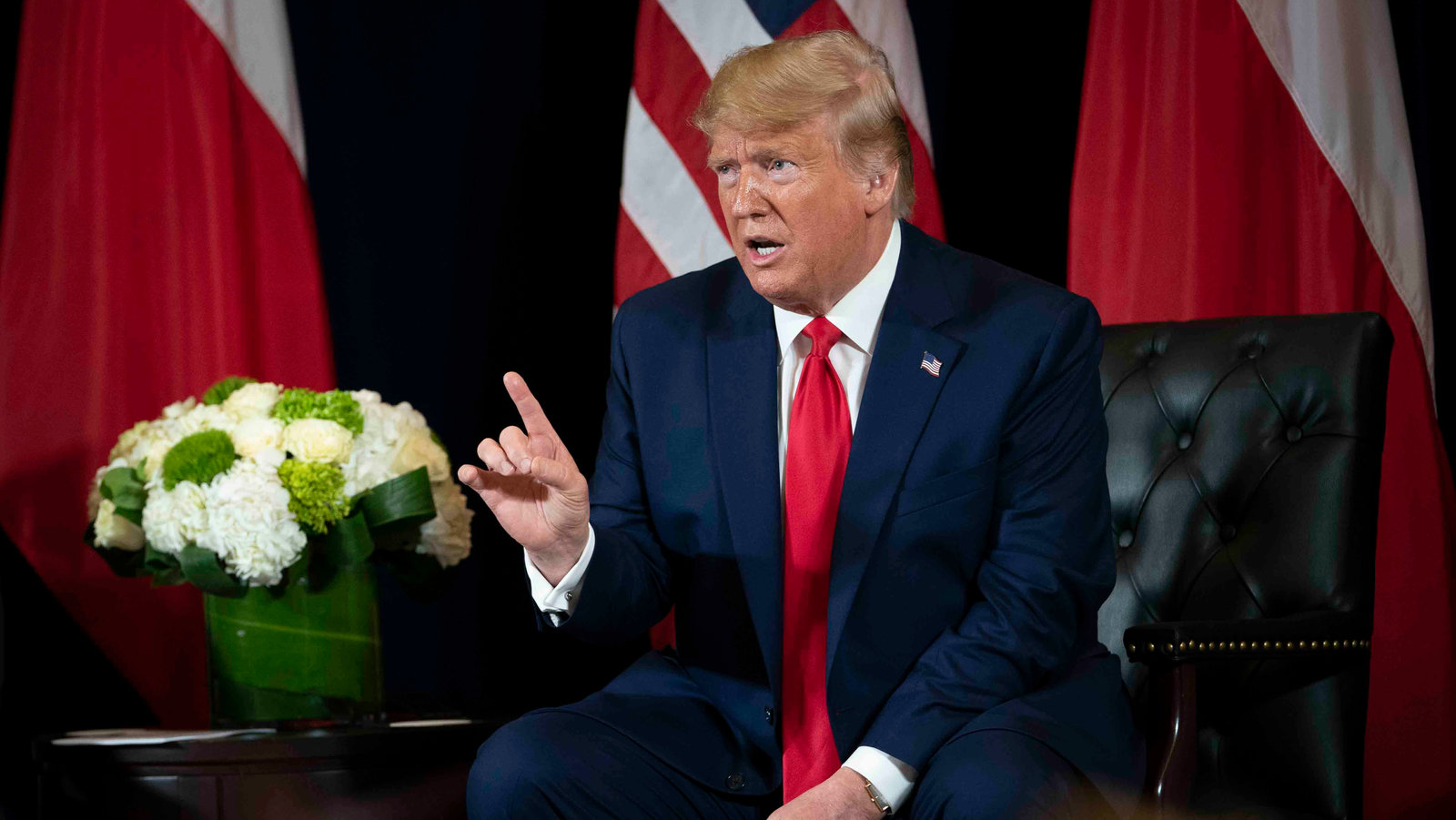Shifting Sands: Trump Administration's Ukraine Policy And Its Impact On Relations With Russia

Table of Contents
Ambivalence and Contradictions: The Core of Trump's Ukraine Approach
The Trump administration's Ukraine policy was marked by a notable lack of a clear, unified strategy, leading to perceived inconsistencies and contradictions. This ambivalence significantly impacted US relations with both Ukraine and Russia. The administration's approach lacked the consistent support for Ukraine seen in previous administrations, creating uncertainty and undermining efforts to counter Russian aggression.
-
Public statements questioning US aid and support: President Trump's public pronouncements often cast doubt on the necessity and value of US assistance to Ukraine, creating an impression of wavering commitment. This contrasted sharply with the bipartisan consensus in Congress regarding the importance of supporting Ukraine's sovereignty.
-
Hesitation in confronting Russian aggression: The administration's response to Russia's annexation of Crimea and its support for separatists in eastern Ukraine was often perceived as hesitant and insufficiently forceful. This contrasted with the stronger, more unified response seen from previous US administrations.
-
Differing opinions within the administration regarding sanctions and military assistance: Internal divisions within the Trump administration regarding the appropriate level of sanctions against Russia and the extent of military aid to Ukraine further contributed to the perception of a disjointed and inconsistent policy. This internal struggle often leaked into public discourse, exacerbating the sense of uncertainty.
-
Examples of specific policy decisions illustrating this ambivalence: The highly publicized withholding of military aid to Ukraine in 2019, linked to investigations into the Biden family, is a prime example of the administration's inconsistent and controversial approach. This act fueled accusations of leveraging foreign policy for domestic political gain.
The Impact on the Minsk Agreements and Eastern Ukraine
The Trump administration's ambiguous stance towards Ukraine significantly affected the implementation of the Minsk agreements, a set of accords designed to resolve the conflict in eastern Ukraine. The lack of a clear and forceful US policy created an environment where Russia could exploit vulnerabilities and continue to destabilize the region.
-
Did the administration prioritize enforcement of the Minsk agreements?: The Trump administration's actions did not demonstrate a strong commitment to enforcing the Minsk agreements. This lack of pressure allowed Russia to continue to violate the terms of the agreements with impunity.
-
How did the lack of clear US stance affect the conflict's progression?: The absence of a consistent US policy emboldened Russia and its proxies, leading to continued fighting and further territorial losses for Ukraine in eastern Ukraine.
-
Assessment of the human cost and territorial changes under this policy: The human cost of the conflict continued to rise during the Trump administration's tenure, with thousands of casualties and significant territorial changes unfavorable to Ukraine.
-
Discussion of any attempts to negotiate with Russia regarding Ukraine: While there were diplomatic engagements between the US and Russia regarding Ukraine, these often lacked the decisiveness and clarity of purpose needed to achieve meaningful progress.
The Role of Sanctions and Their Effectiveness
The Trump administration imposed some sanctions on Russia, but their effectiveness in deterring further aggression in Ukraine is a subject of ongoing debate. The inconsistent application and occasional loosening of sanctions raised questions about the administration's overall strategy.
-
Types of sanctions imposed: The sanctions imposed included financial restrictions, travel bans, and restrictions on specific sectors of the Russian economy.
-
Evidence of their impact (or lack thereof) on Russia's behavior: While some argue that the sanctions had a limited impact on altering Russia's behavior, others point to the sanctions as a factor contributing to Russia's economic difficulties.
-
Criticisms and debates surrounding sanctions’ effectiveness: Critics argued that the sanctions were insufficiently targeted and lacked the necessary coordination with allies to achieve maximum effectiveness.
-
Comparison with previous administrations’ sanctions policies: A comparison with sanctions imposed by previous administrations reveals differences in both scope and intensity, highlighting the variability in US responses to Russian aggression.
The Long-Term Consequences for US-Russia Relations
The Trump administration's Ukraine policy had lasting repercussions for US-Russia relations, significantly eroding trust and increasing geopolitical tensions. The inconsistent and often contradictory messaging undermined efforts to build a stable and predictable relationship with Russia.
-
Erosion of trust between the two nations: The perceived lack of commitment to supporting Ukraine damaged US credibility and eroded trust with its allies. This weakened the collective response to Russian aggression.
-
Increased geopolitical tensions: The ambiguous policy increased uncertainty and led to heightened geopolitical tensions in Eastern Europe and beyond.
-
Impact on NATO and other international alliances: The administration's approach challenged the unity of NATO and other international alliances, casting doubt on the reliability of the US as a security partner.
-
Long-term implications for security in Eastern Europe: The legacy of the Trump administration's Ukraine policy continues to affect the security environment in Eastern Europe, with long-term implications for stability and regional peace.
Conclusion
The Trump administration's approach to Ukraine was characterized by significant ambivalence, leaving a lasting impact on US-Russia relations. The lack of a consistent and assertive policy towards Russian aggression in Ukraine undermined efforts to resolve the conflict and fostered a climate of uncertainty. Understanding the complexities of the Trump Administration's Ukraine Policy and its repercussions is crucial for navigating the current geopolitical landscape and preventing future escalations. Further research into the specific decision-making processes and the internal debates within the administration would provide a more nuanced understanding of this pivotal period in international relations. Only by analyzing this complex interplay of factors can we hope to effectively shape future strategies toward Ukraine and forge a more stable relationship with Russia.

Featured Posts
-
 The Rise And Fall And Rise Again Of Sean Diddy Combs
May 14, 2025
The Rise And Fall And Rise Again Of Sean Diddy Combs
May 14, 2025 -
 Reparations Franca Finalmente Reconhece A Divida Historica Com O Haiti
May 14, 2025
Reparations Franca Finalmente Reconhece A Divida Historica Com O Haiti
May 14, 2025 -
 Snow White Live Action Forecasting Rotten Tomatoes Score Based On Disney Remake History
May 14, 2025
Snow White Live Action Forecasting Rotten Tomatoes Score Based On Disney Remake History
May 14, 2025 -
 Man United Transfer News Jobe Bellingham Talks Imminent
May 14, 2025
Man United Transfer News Jobe Bellingham Talks Imminent
May 14, 2025 -
 Tommy Fury Vs Jake Paul 3 Million Offer Rejected Fueling The Rivalry
May 14, 2025
Tommy Fury Vs Jake Paul 3 Million Offer Rejected Fueling The Rivalry
May 14, 2025
